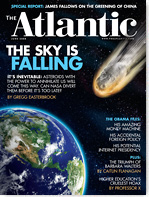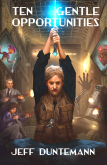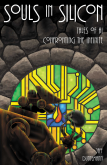As I've mentioned here a time or two, I've been gradually recasting my 1993 book Borland Pascal 7 From Square One for the current release of FreePascal. It's turned out to be a larger project than I had expected for a number of reasons, some of them humbling (I was not as good a writer in 1984 as I am today) and some completely unexpected. The one that came out of left field stems from the fact that Pascal isn't used in the US that much anymore. Most of the audience for the new book is in Continental Europe, and while most of them understand English, they understand correct, formal, university-taught English.
Not slangy, quirky, down-home, Jeff Duntemann feet-up-on-the-cracker-barrel English.
This became clear some time back when I posted the first few chapters for FreePascal users to look at. I got a few emails with detailed critique (for which I am extremely grateful) and there was a certain amount of puzzlement about some of the language. A few of the things that puzzled my European friends were not a surprise:
- QBit stretches and climbs on my chest, wagging furiously as though to say, “Hey, guy, tempus is fugiting. Shake it!”
- Ya gotta have a plan.
- …and write the plan in German, to boot.
- …cats are pets, not hors d'oerves on the hoof.
But some were. The expression “to run errands” is not universally understood there. Nor is the word “shack.” (I changed it to “shed.”) I want very much for the book to be accessible to those who are using Pascal the most, and that's a new kind of challenge for me: Writing plain English without resorting to clever coinages and Americanisms.
Alas, I'm not always aware of it when I'm using Americanisms. (I should find a book for English-speakers traveling here, just as there are books on British English for those of us who visit the UK.) There are other problems: Europeans are not intuitive with Fahrenheit temperatures, any more than we're intuitive with Celsius here. I mentioned in the book that it hit 123° in Scottsdale once in the summer of 1996, and although my European friends know that that's hot, when I translate it to Celsius—50°—they gasp. We were gasping too—Keith and I had to shut the Coriolis offices down because the air conditioners were losing the race. Solution: Put temps in Celsius. Americans know damned well how hot it is in Scottsdale. (As I left in 2002, it seemed like most of them had already moved there.)
It's a two-edged sword. I like writing the way I talk, and for those who haven't met me, well, I talk the way I write. It's easy. On the other hand, having worked my way through the first hundred-odd pages of the new book, straightening out my language quirks, I find that it now reads very well. It doesn't sound quite as much like me, but that's OK. The idea is to keep Pascal alive, wherever and however it is to be done. Writing for the world—and not strictly for us American barbarians—is a useful skill and good discipline. If I stick with Pascal and Delphi, which I have every intention of doing, you're likely to see more of it in the future.
 I'm not as sanguine about
I'm not as sanguine about  And then there's
And then there's 











